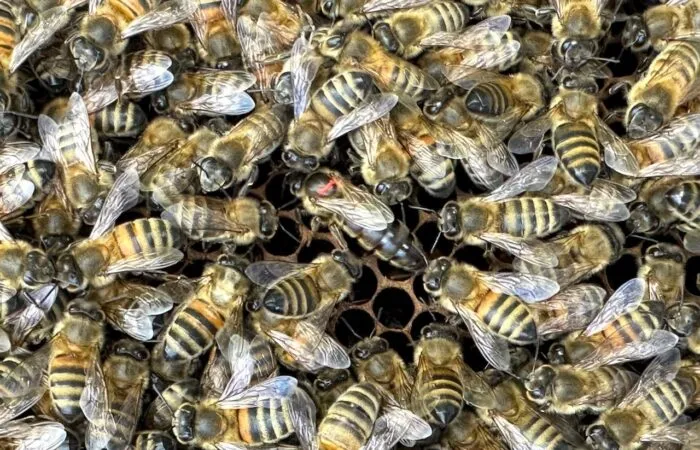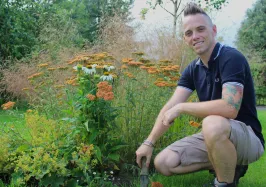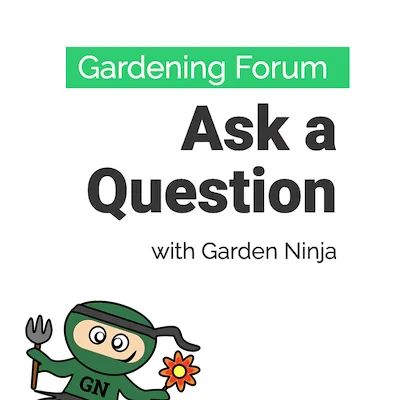With careful consideration, you can create a garden that's fit for the entire family. Whether its young children who want to play, teenagers that want to be left along with their phones or adults who want somewhere to relax. It just takes careful planning. This guide will give you my top tips on planning a family-friendly garden along with a design example that I created recently in an overlooked small urban garden.
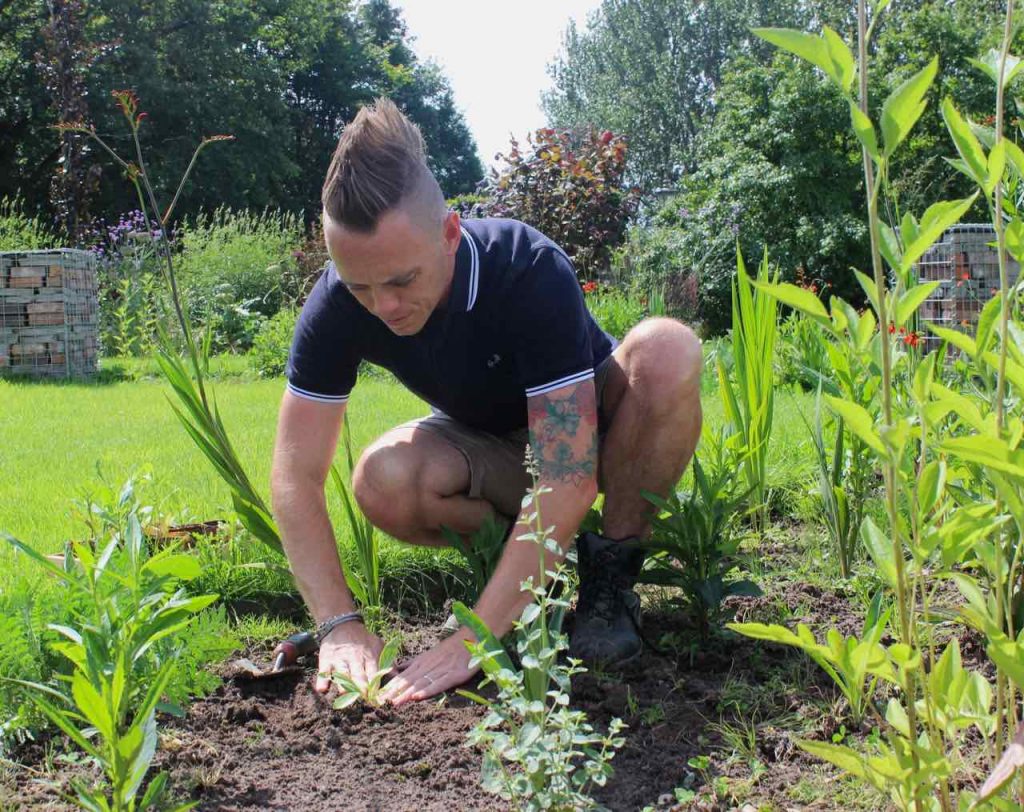
How to design a family friendly garden
- Key areas to consider
- Using zoning in the garden
- Play equipment layouts
- Use raised garden beds
- Paving choices
- Seating in a family garden
- Family garden design example with before & after
Key areas when designing a family friendly garden
Before jumping in to garden design for a family friendly garden its important to consider the following questions to help you fully understand your gardens needs and wants.
- Work out how you are going to use the garden?
- Identify the 'aspect' of the garden and sun movement
- Utilise zones in the garden for children and adults
- Ensure there's space for change as children grow up
- Use planting as screening and to add interest
- Paving can help create a journey through the garden
- Do you need to ensure the garden is dog friendly?
If you're not using a Garden Designer it worthwhile sitting down and sketching up some ideas of your garden to see where garden features may best sit. Don't forget to add storage and mark on any existing trees, hard landscaping or existing buildings.
How to design a family friendly garden?
Before you start laying down paving or erecting play equipment it is really worthwhile spending some time thinking about how you're going to use the garden. Just because you are accommodating children with potential play areas it doesn't mean that adults can have somewhere delightful to relax as well. Here are my top tips.
1. Use zoning in the garden
Zones are incredibly useful in garden design. Simply put, it's breaking up the garden space into different distinct areas. A good example is having a play area in one part, usually close to the house so you can keep an eye on your children. Another example may be a grow your own area, away from the play area to grow vegetables or an adult entertaining terrace in the sunniest part of the garden. Storage is often overlooked and I usually add this as an addition to one of the zones usually the grow your own area.
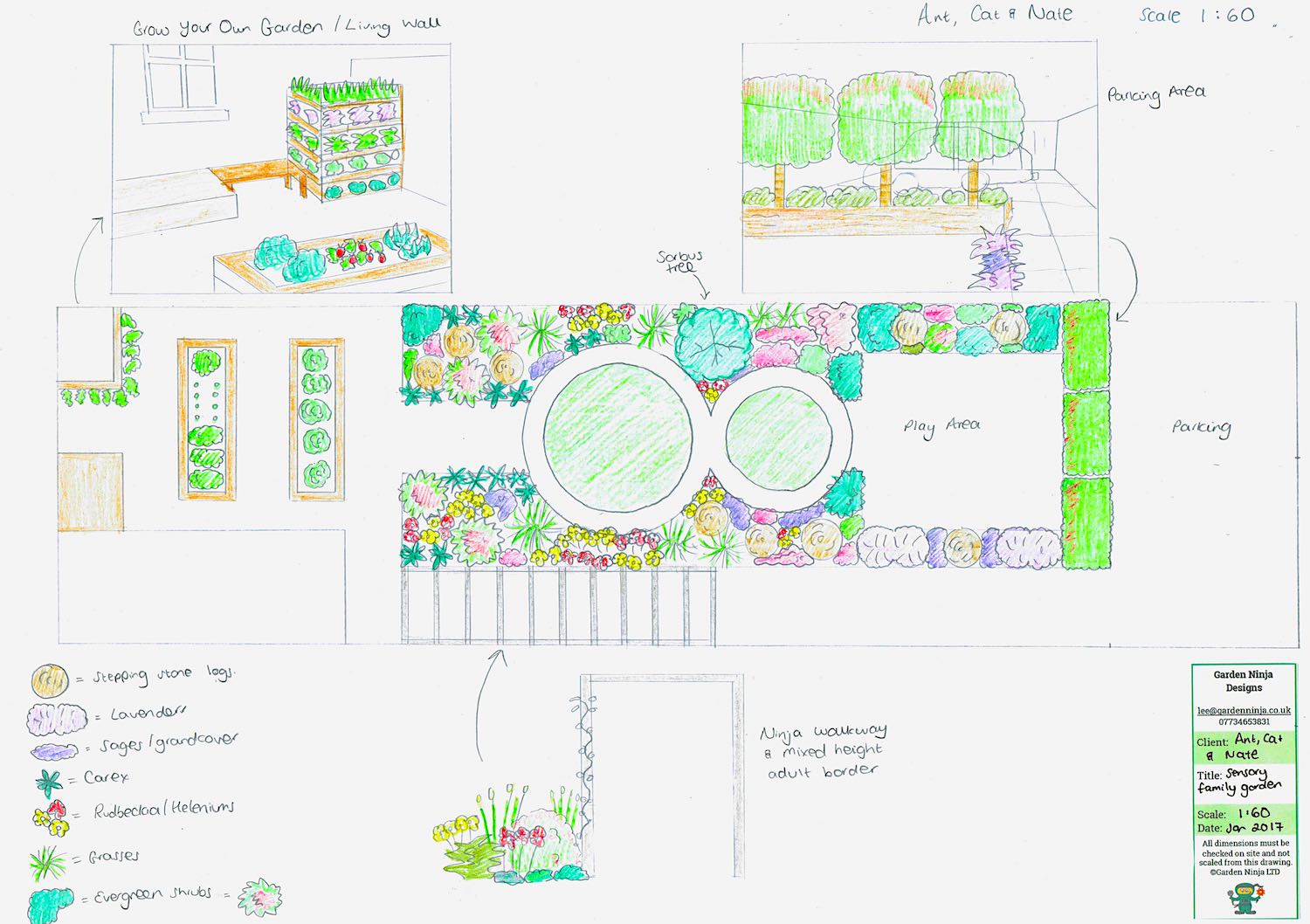
2. Play equipment doesn't need to be an expensive eyesore
There's a huge market out there for massive jungle gyms and play equipment. In fact, you can spend in the thousands for a quality solid play area. However, you need to consider just how active your children are and whether the investment is going to be well utilised.
You may find that your children are just as happy on a smaller swing set, rope swing or shed/playhouse. Getting creative can often be both exciting and more cost-effective. In this garden, I used scaffolding poles to create a jungle gym which also doubled as a walkway arbour. Meaning once the children had grown up the structure still has a life.
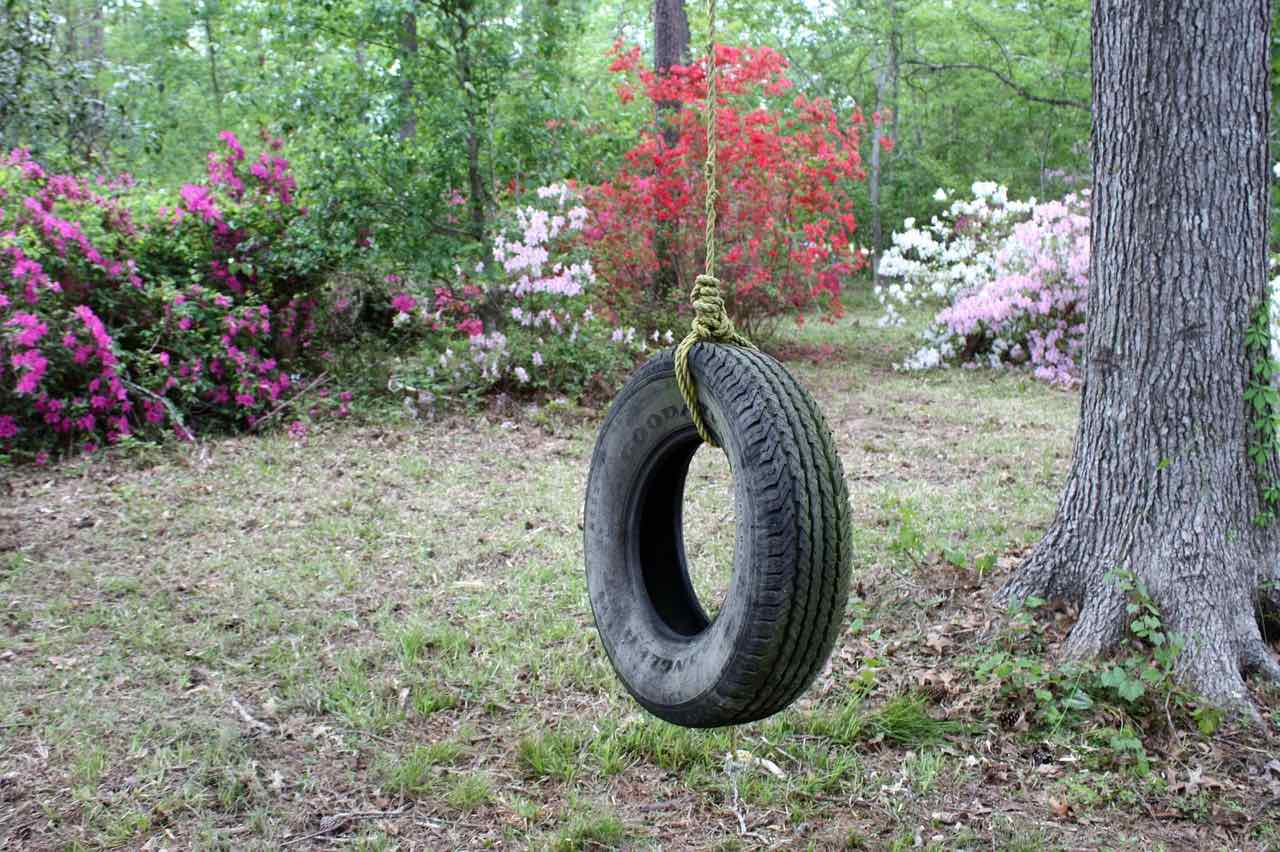
3. Use raised beds
Raised beds can save you a fortune if you have particularly poor soil or bad levels in your garden. They are also great for children as they act as seat, jumping off areas, playgrounds and mini tables for their adventures. Bringing toy sets outside to play in the borders is super low cost and will allow your children to become creative!
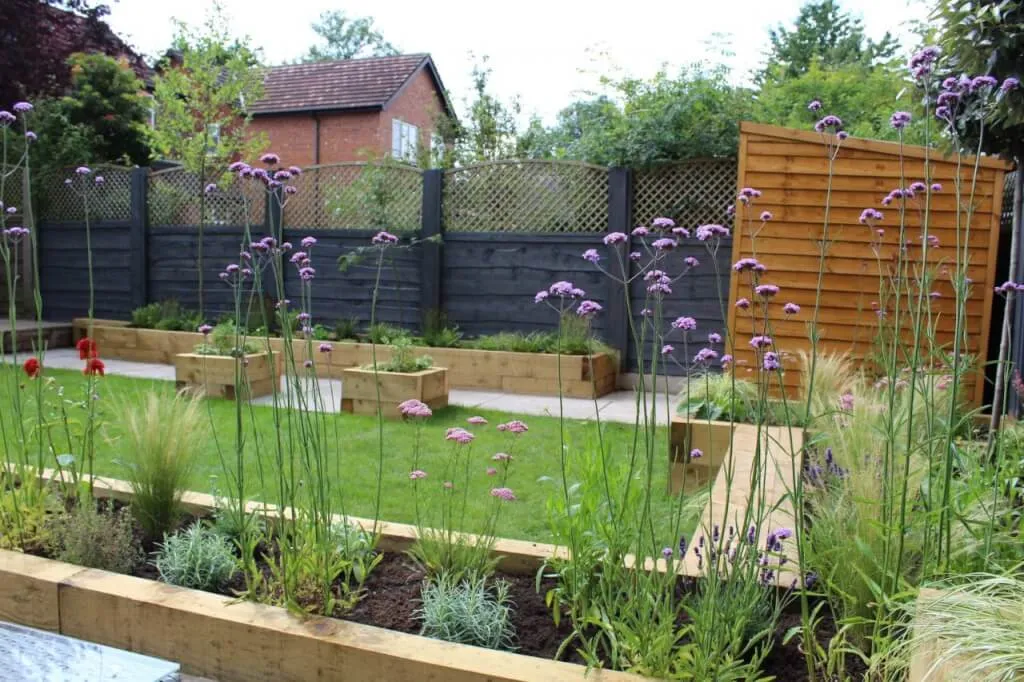
4. Paving and pathways can help separate the garden zones
Paving can really help split up a garden making the zones more obvious. By adding a path off a football pitch/lawn you can help mark out which area is for the children and which is a parent zone. The use of level paths can also double up as road for children's play or bike track.
Using stepping stones can provide a 'stone river' for games and the help add drama to a garden. The options are endless!
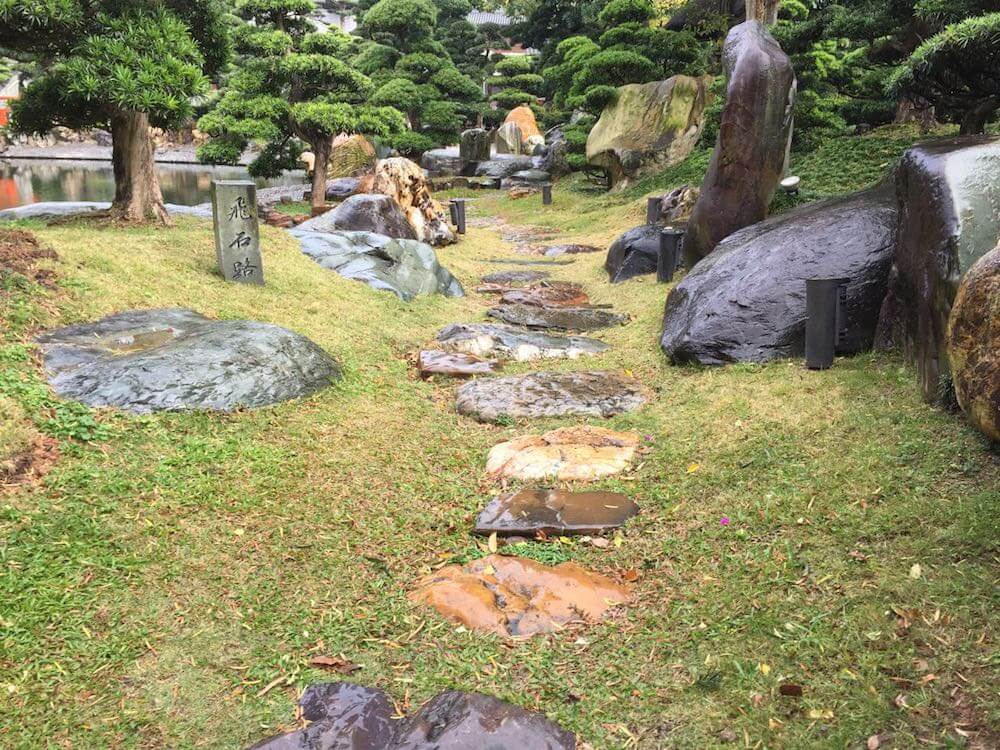
Children love stepping stones through borders or areas of the garden.
5. Integrated garden seating
Seating is an important function of any garden. However, garden furniture can take up a lot of room and require storage in the winter months. The use of timber-raised beds in this garden design meant I could incorporate integrated seating in the form of benches. This gave the client far more seating for those impromptu BBQs, parties and children's playtime. It blends in perfectly with the garden and means they can chase the sun as it moves around this garden.
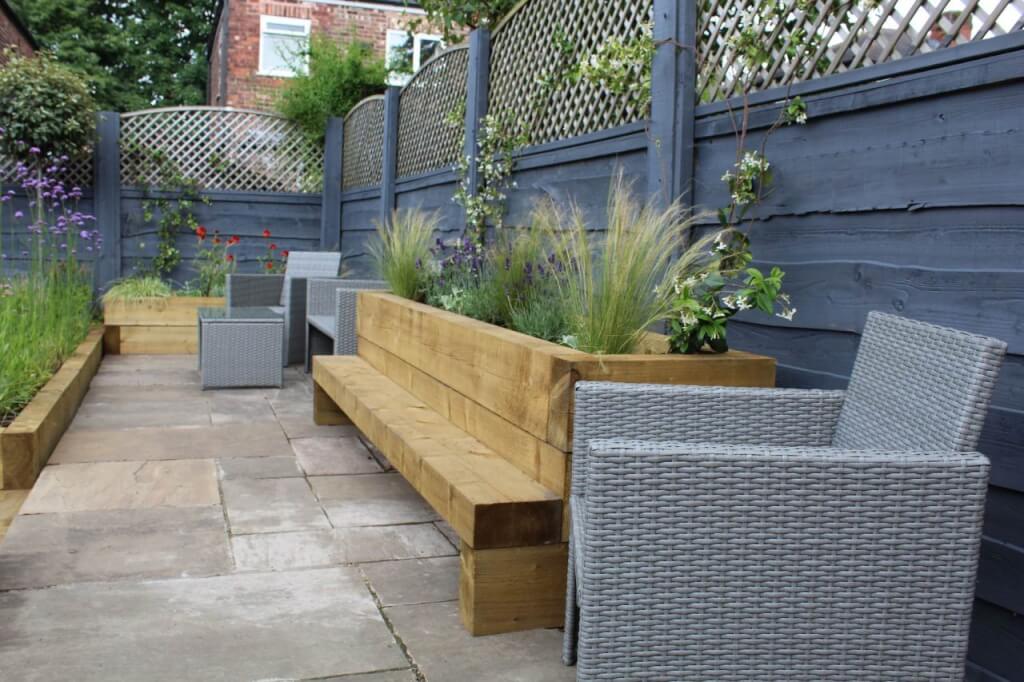
By planting under one of the benches, it helps pull the visitor almost into the garden. When sat there you get the feeling of being sat in the herbaceous border. It also means as you feet rub up against the Thyme you get the wonderful scent of it.
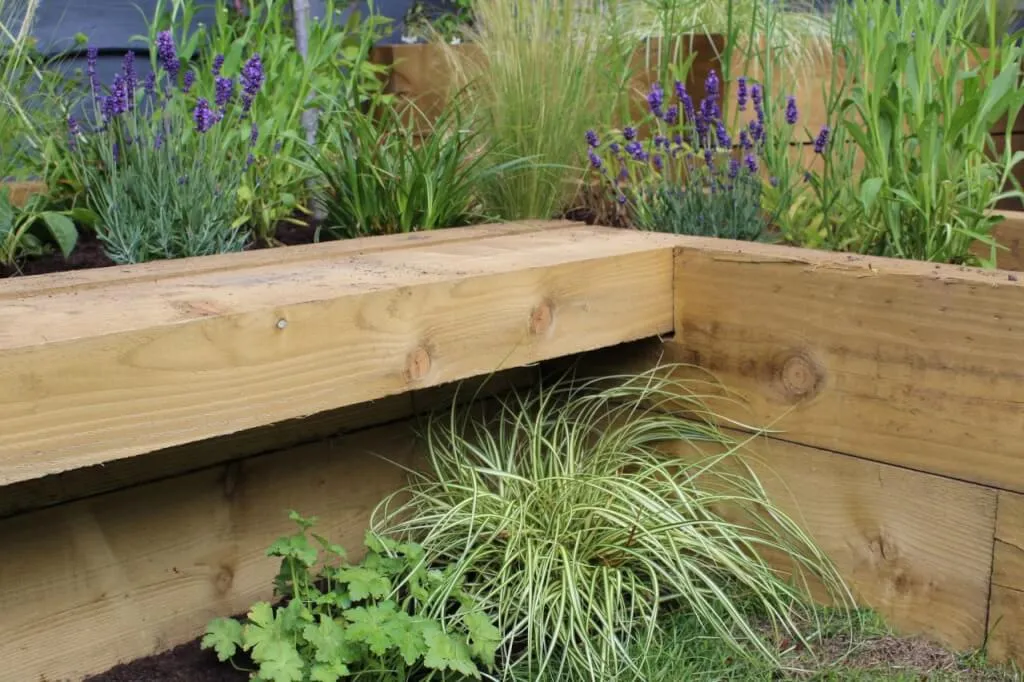
Family Friendly Garden Design Example
This offending garden is a North Facing overlooked house in Manchester which I was asked to redesign. After some extensive house remodelling, the builders had used and abused the back garden leaving it as a compacted mess. It has the trademark random overgrown tree, the unimaginative square lawn and the odd out of control shrub. It retains too much water and has all sorts of different levels and bumps.
The clients asked Garden Ninja to transform this space into an area that would provide them with an area for two hard working parents to relax and also an exciting space where their young children could play safely. They were also keen to have a wow factor and some brightly coloured plants to encourage wildlife. I got the coffee on and got to work designing them a haven of peace for the adults and somewhere fun for their children.
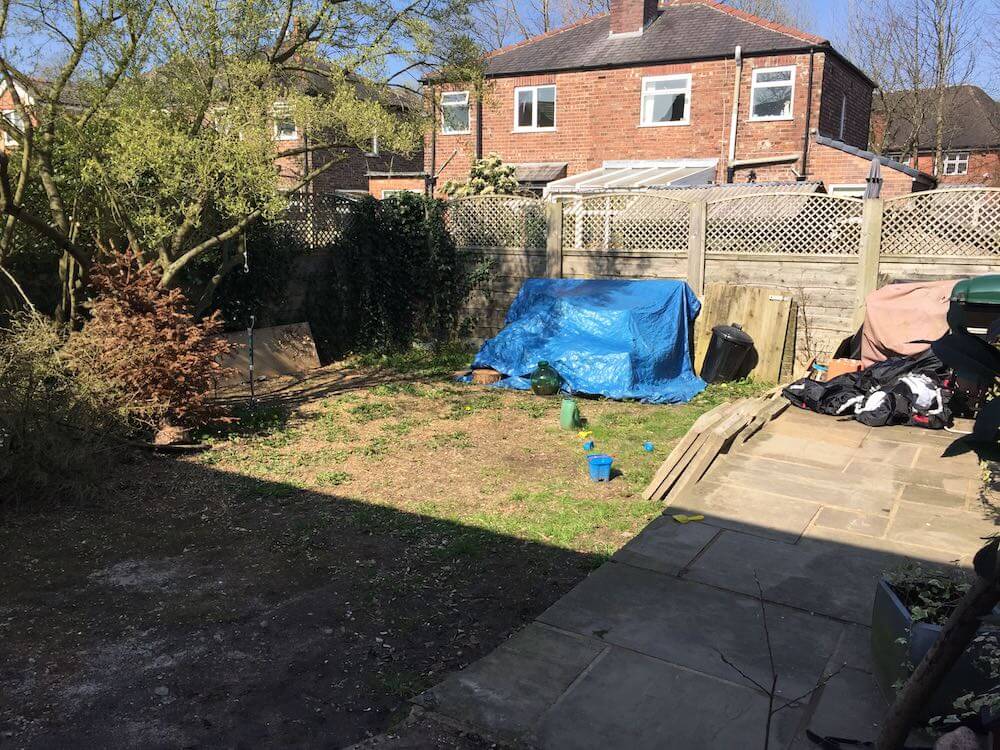
The Garden Before the Transformation above.
In a small garden, it's easy to try and cram as much in as possible. We established that they definitely wanted a substantial lawned area for the children to play on. This would become the children's zone which could evolve over time and wasn't too precious being used by an army of screaming children, a wendy house, a battlefield or a makeshift football pitch.
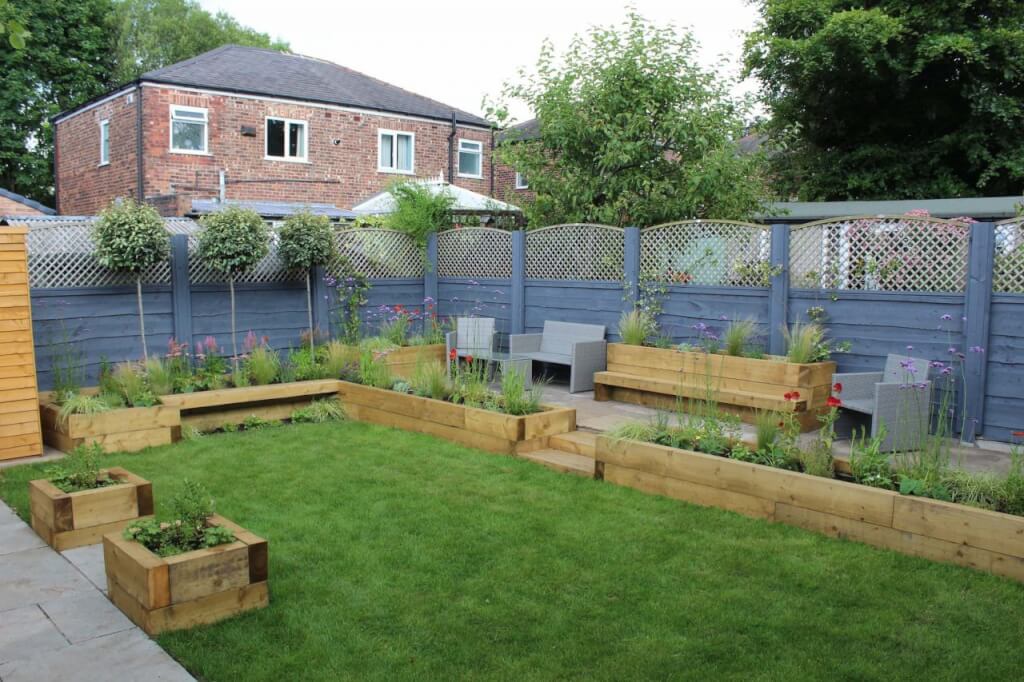
The family friendly garden above after my design transformation.
The adult zone was designed as a raised terrace area which would be screened off in part by planters and raised borders on each side. There was careful access planned should a parent need to quickly get to the children zone and to help provide flow around the garden. These beds and borders helped also break up the neighbouring views giving privacy.
They also needed storage and access for bikes. By using cut-through paths to the children's lawn, it allows movement between the zones and helps join the garden together. Yet encasing the zones in borders with various heights it gives the feeling of privacy when in each zone.
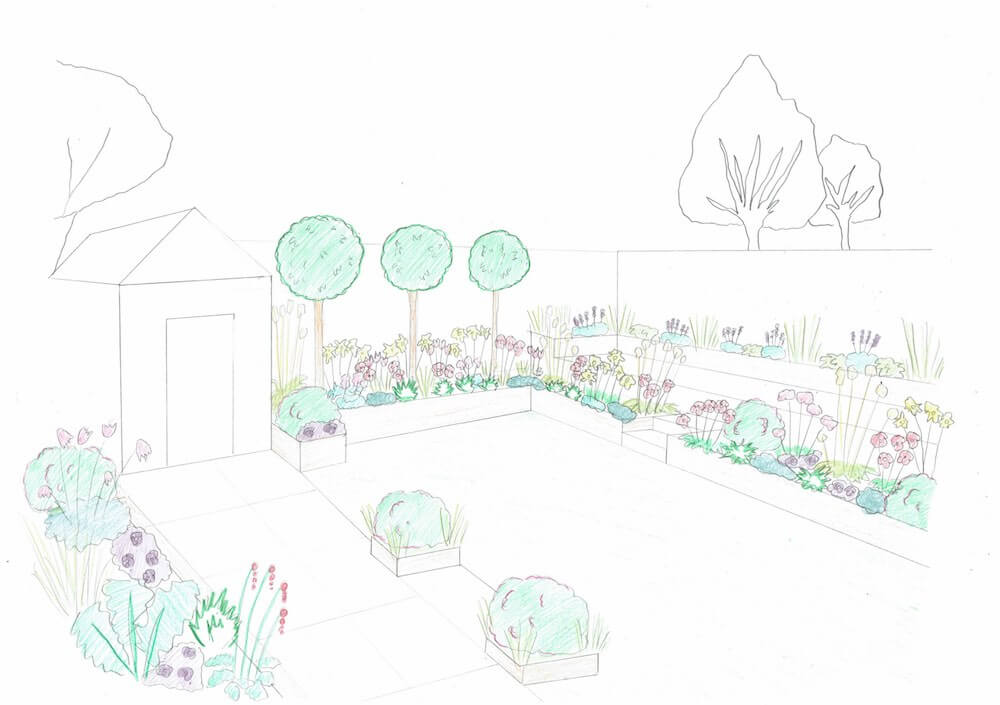
By using cut-through paths to the children's lawn, it allows movement between the zones and helps join the garden together. Yet encasing the zones in borders with various heights it gives the feeling of privacy when in each zone.
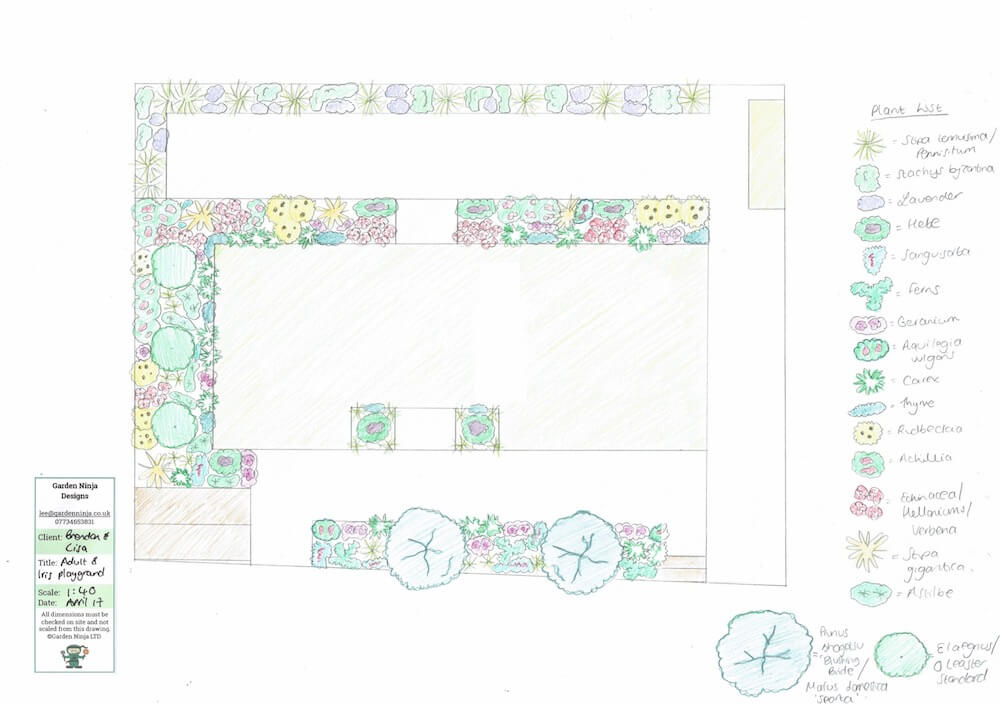
The raised beds around the children zone contained a mix of super tough hardy herbaceous perennials, grasses and shrubs. In addition to this, they also had woven through them some beautiful delicate specimens. Thus giving a more sophisticated feel than just bedding plants and evergreen shrubs. These borders were designed to encourage visitors to want to investigate these plants further, ask questions and become engrossed in the drifts of planting rather than focusing on the small size of the garden.
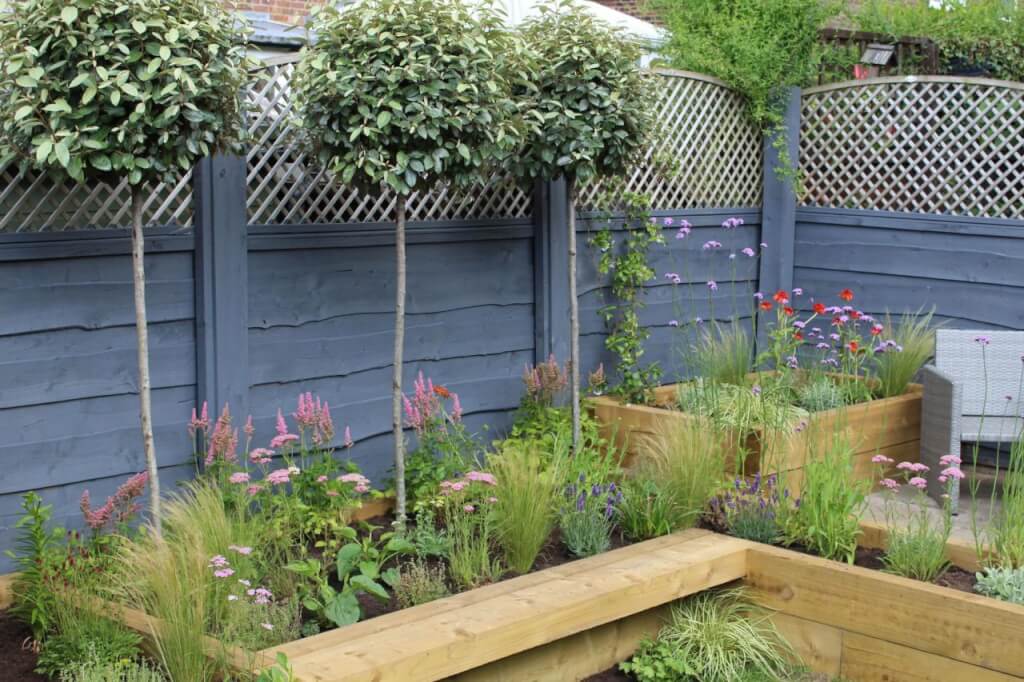
How to deal with a shady border in family friendly garden design
The far left of the garden was dappled shade for most of the day due to a fence and neighbouring trees. By choosing shade-loving plants, such as Sanguisorba and ferns, that would thrive in the moist conditions I brightened up this area. I also use the two trees, Malus 'Sparta' and Sorbus 'Joseph Rock' to give some height and further privacy to this area.
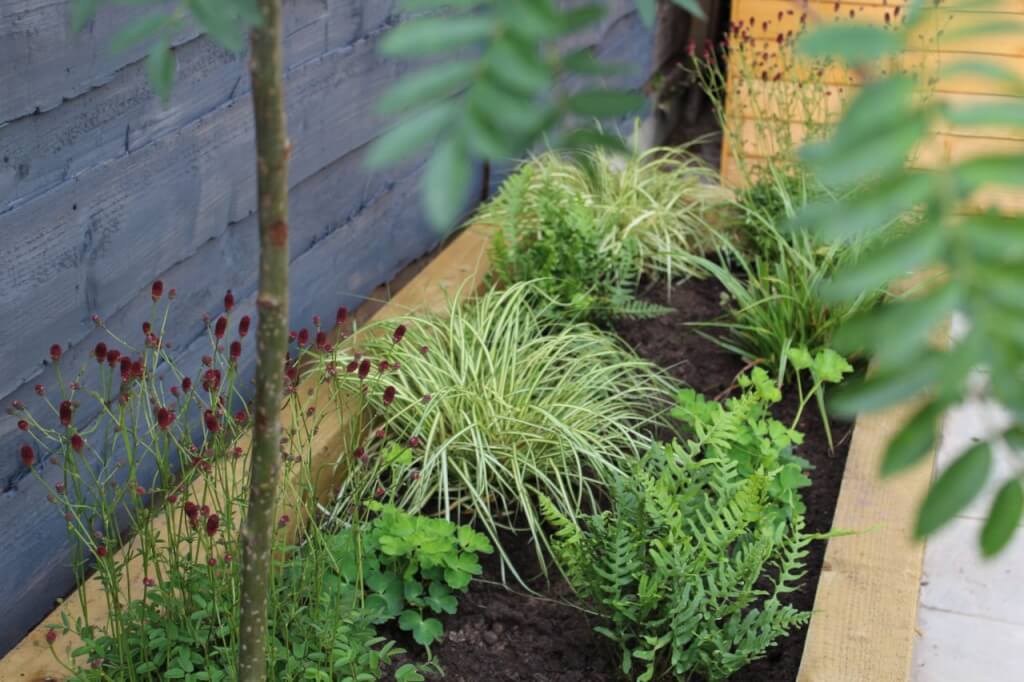
Family Friendly Plant List
The plants chosen are all super pollinators so they are great for bees and wildlife. I created a planting scheme that brought colour throughout the season allowing the garden to morph over the seasons extending interest. You can see more below about the plants I used to create this family friendly garden.
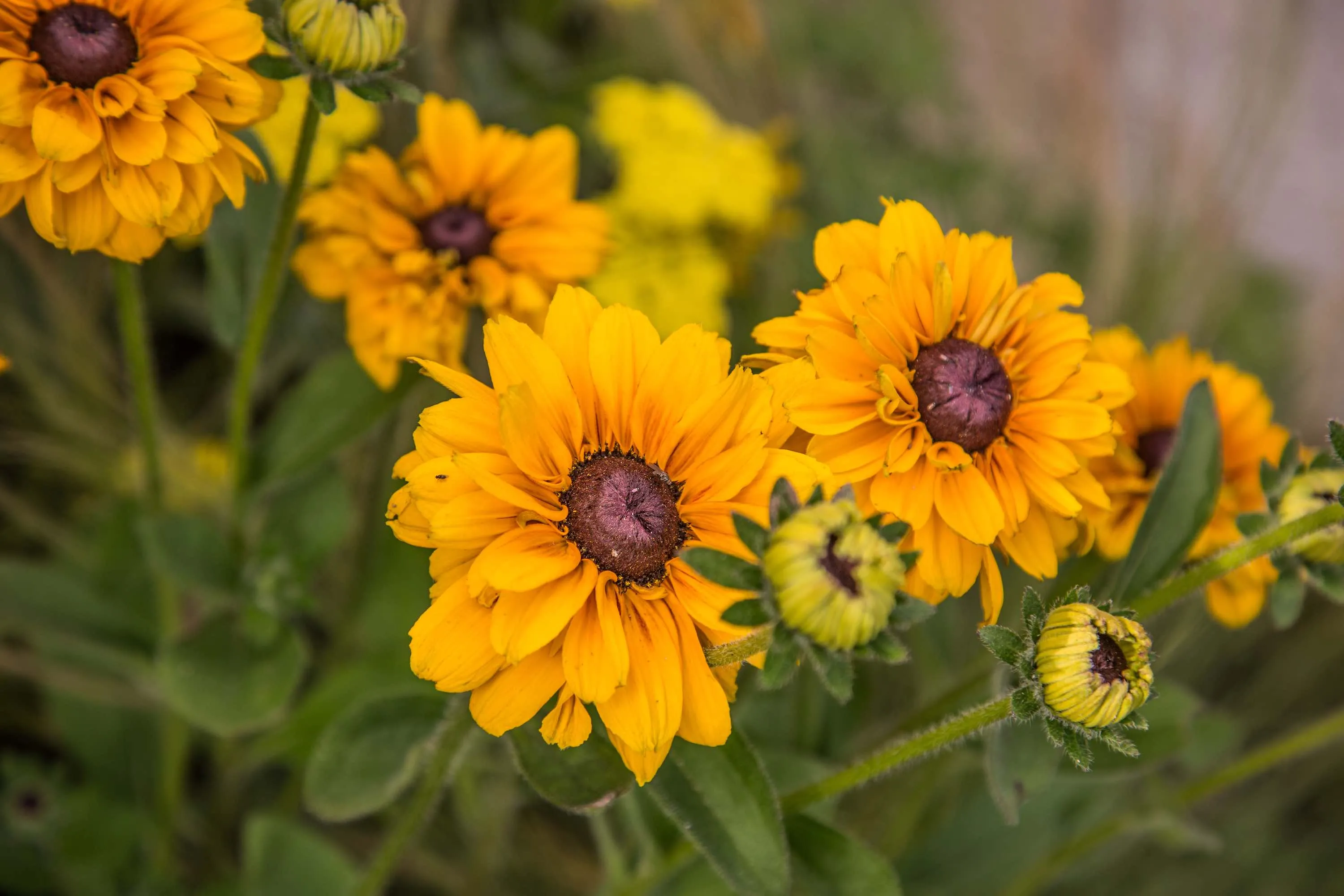
The most important thing with a family-friendly garden design is that it actively encourages people to go out into the garden and enjoy it! By spending time considering how to lay out the garden, choosing your family garden functions carefully and planting, you can create somewhere for the family.
If you want to avoid some key garden design fails then the video guide below is a must before designing your child-friendly garden.
Summary
Do you have a garden that needs a Garden Ninja transformation? Why not get in touch with me to start your own dream garden design!
If you’ve found this family garden design guide helpful why not follow me on Youtube where I’ve got plenty of gardening guides? Or leave a comment in the blog below with your garden questions for me to answer.
You can also Tweet, Facebook or Instagram me with your questions or thoughts. Happy Gardening!

